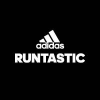
Runtastic
A mobile fitness company.
| Date | Investors | Amount | Round |
|---|---|---|---|
| - | investor investor investor investor | €0.0 | round |
| investor | €0.0 | round | |
| investor | €0.0 | round | |
| investor | €0.0 | round | |
| investor | €0.0 | round | |
* | €220m Valuation: €220m | Acquisition | |
| Total Funding | 000k | ||
| EUR | 2016 | 2017 | 2018 | 2019 | 2020 | 2021 | 2022 |
|---|---|---|---|---|---|---|---|
| Revenues | 0000 | 0000 | 0000 | 0000 | 0000 | 0000 | 0000 |
| EBITDA | 0000 | 0000 | 0000 | 0000 | 0000 | 0000 | 0000 |
| Profit | 0000 | 0000 | 0000 | 0000 | 0000 | 0000 | 0000 |
| EV | 0000 | 0000 | 0000 | 0000 | 0000 | 0000 | 0000 |
| EV / revenue | 00.0x | 00.0x | 00.0x | 00.0x | 00.0x | 00.0x | 00.0x |
| EV / EBITDA | 00.0x | 00.0x | 00.0x | 00.0x | 00.0x | 00.0x | 00.0x |
| R&D budget | 0000 | 0000 | 0000 | 0000 | 0000 | 0000 | 0000 |
Source: Company filings or news article
Related Content
Runtastic GmbH operates as a digital health and fitness company, now functioning as a subsidiary of Adidas AG. The company was established in October 2009 in Pasching, Austria, by the founding team of Florian Gschwandtner, Alfred Luger, René Giretzlehner, and Christian Kaar. Their journey began with a university project idea to track sailboat races, which later evolved. Initially, they explored tracking runners via stationary equipment and RFID chips in shoes, but the concept failed to gain traction, selling only one unit. The turning point arrived with the launch of the GPS-enabled iPhone 3G in 2008, prompting a strategic pivot towards a mobile application.
The founders faced significant early challenges, including skepticism from Austrian investors, which forced them to self-fund the venture for the first 18 months. Despite the lack of initial capital, the app gained momentum quickly through word-of-mouth and integration with Facebook's API for sharing activities. The business model focused on revenue from the start through a paid premium version of the app, alongside a free version. This strategy led to cash-flow positivity within 18 months. The company's growth attracted investors, and in October 2013, Axel Springer Digital Ventures acquired a 50.1% stake for €22 million. This culminated in a landmark acquisition in August 2015, when Adidas AG purchased Runtastic for an enterprise value of €220 million. Following the acquisition, Runtastic continued to operate as a distinct entity within the Adidas Group, and in September 2019, its core products were rebranded as 'adidas Running' and 'adidas Training'.
The company's core offering is a suite of mobile applications that provide a health and fitness tracking platform for consumers. The apps, available for various activities like running, cycling, and walking, use smartphone GPS to track workouts, monitor statistics, and analyze performance through maps and graphs. The platform integrates social and gamification elements, allowing users to share their progress and engage with a community. Revenue is generated primarily through one-time app sales and premium subscriptions which unlock advanced features like personalized training plans. Beyond the apps, Runtastic has also developed and sold hardware, including a heart rate monitor and a GPS sports watch. The company targets athletes and fitness enthusiasts of all levels, aiming to make sports and an active lifestyle enjoyable and accessible. All content, from training videos to social media posts, is produced in-house.
Keywords: fitness tracking, mobile applications, digital health, running app, activity tracking, wearable technology, corporate acquisition, freemium model, athletic community, training plans